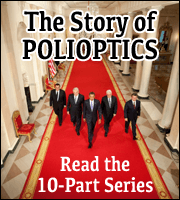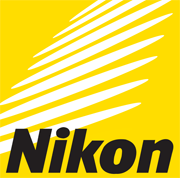
Anne Edwards is our interview guest this week.
Show produced by Katherine Caperton
Original Air Date: May 14, 2011 on SiriusXM Satellite Radio “POTUS” Channel 124. Click above to listen
It’s a week in which the mechanics of White House press coverage takes center stage. A blog post by Reuters photographer Jason Reed revealedwhat many of us who have worked in and out of the White House have known for a long time: that after major televised addresses, usually from the Oval Office, the President would extend his stay in the chair for a few minutes to allow still photographers to capture a facsimile image of the event for publication on the world’s front pages.
The Washington Post published a comprehensive review of the imbroglio in its May 13 edition.
The difference between the reenactment on the evening of Osama bin Laden’s death and the previous ones to which I was a party during the Clinton years is that this one was staged in the Cross Hall and the East Room of the White House rather than the Oval Office. There’s no difference, really, except that the East Room reenactment involved significantly enhance theatrics of the “walk out” from the Blue Room to the lectern on the West side of the East Room. As Jason Reed wrote, “once Obama was off the air, we were escorted in front of that teleprompter and the President then re-enacted the walk-out and first 30 seconds of the statement for us.”
Whether in the Oval Office or the East Room, there are logical and practical reasons for this. A Presidential Address is, first and foremost, an audio and video production. It requires complete quiet and no movement, lest the President becomes distracted. A President ought to have the chance to deliver his speech without a gang moving around in his field of peripheral vision.
On the other hand, who is to deny that photojournalists — that genuintely integral fulcrum of newsgathering — ought to have a chance to capture what passes for “news” at the White House, even if that news is a man reading a script into a lens?
So the compromise was always that, when the tally light went off, the photographers were escorted in for a minute or so to snap an image of the President holding his script, looking straight ahead. It wasn’t Pulitzer-winning stuff, not by a long shot, but they could maintain that they covered the news just like the networks and newspaper reporters did. And the images they gathered were much better than the “screen grabs” that were taken from freeze-frames of the video feed. Invariably, the photos would show up on the front pages of the world’s papers and, quite often, photo editors or caption writers would fudge on their verisimilitude.
And let’s be honest: would the reader at home really know the difference? Would they read the caption closely enough to make a distinction when the caption read something like “The President reads his statement to photographers after delivering a televised address to the nation”?
It’s a difficult call, brimming with issues of journalistic ethics, state-controlled communication and, of course, the jobs and livelihoods of people who make a living capturing news through the lens. With today’s high-definition video and silent, robotic cameras that could be controlled by the likes of Reuters, AP and other newspapers and photo agencies, there’s likely a technology-driven answer to this long-simmering debate. Now that the photographers have publicly complained and the White House has declared a stop to the prior practice, they better arrive at a solution soon, before the next cut-in to network airtime for “BREAKING NEWS.”
* * *
On this episode of Polioptics for SiriusXM Satellite Radio, Adam Belmar and I get into this debate at full throttle with one of the masters of White House press coverage. Anne Edwards began on the news coverage side of the business and then shifted over to work on the White House Staff of President Jimmy Carter. She returned to the White House under President Bill Clinton and served for eight years as director of press advance, turning out the lights at the end of the Administration. There are few people around today who match Anne for the things they’ve done, and the places they’ve been in the service of helping a President communicate with the world.


Leave a Reply